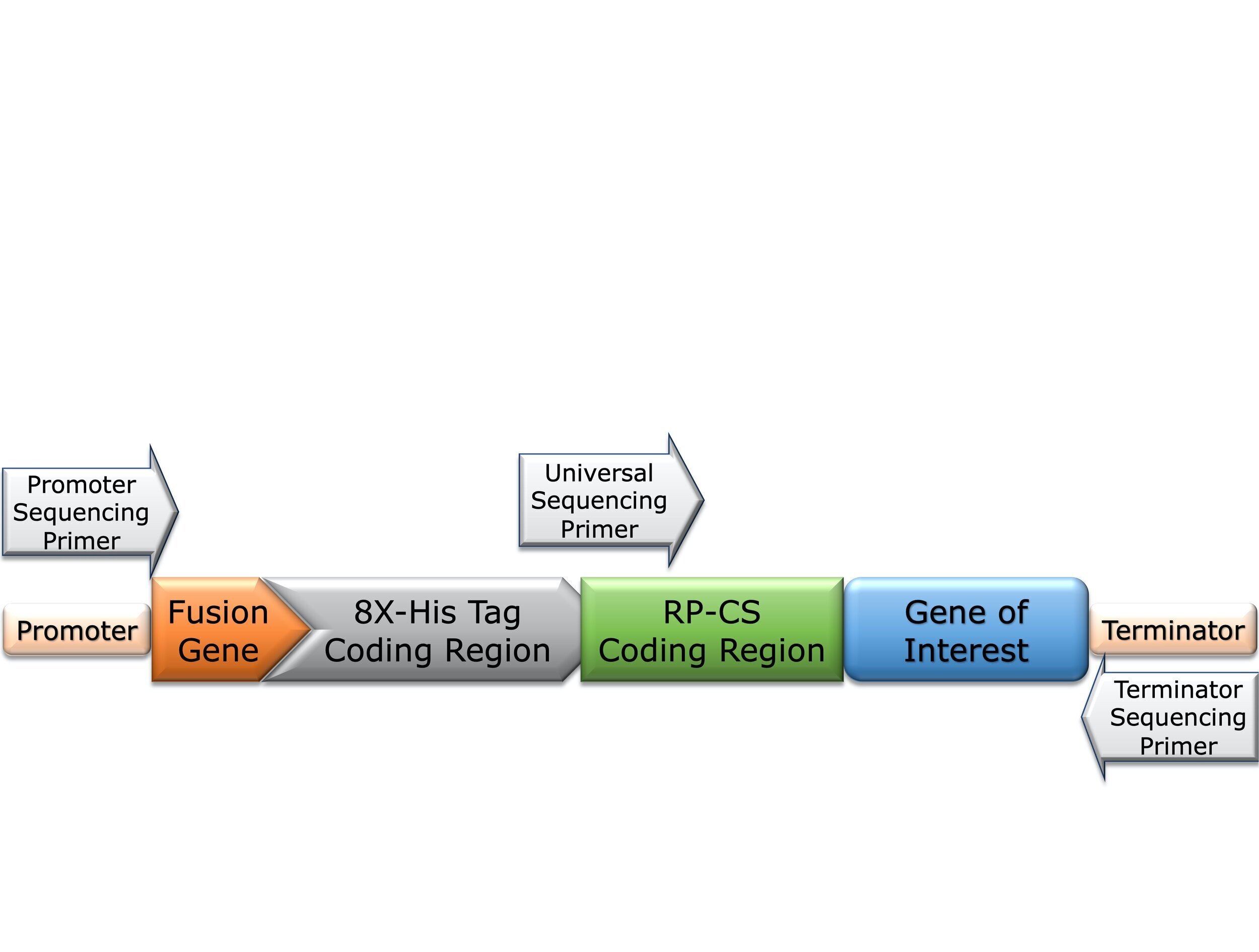Cloning Plasmids and Related Tools
Parallelize optimization of fusion protein production to accelerate testing for maximizing protein yield.
Plasmids encode six different N-terminal fusions and a 3C Protease cleavage site. Using a PCR amplicon made with appropriate primers, the linearized plasmids, and your gene assembly kit of choice, you can incorporate the gene-of-interest into all six plasmids in a single recombination reaction and transformation.
Characterization of recombinant plasmid and protein is facile
All recombinant plasmids are easily sequenced by a universal 5’ primer. Recombinant proteins are purified by IMAC and the affinity tag removed by recombinant Rhinovirus 3C Protease.
The gene inserted into any plasmid can be sequenced using a Universal primer compatible will all plasmids. Combined with Promoter and Terminator primers, one can fully characterize and validate their expression plasmid.
The recombinant tagged protein of interest, following purification with IMAC, is cleaved by the His-tagged RP at the RP Cut Site (RP-CS). Both the His-tagged fusion partner and His-tagged protease are then removed using a second IMAC step. This typically results in highly pure Protein of Interest.


